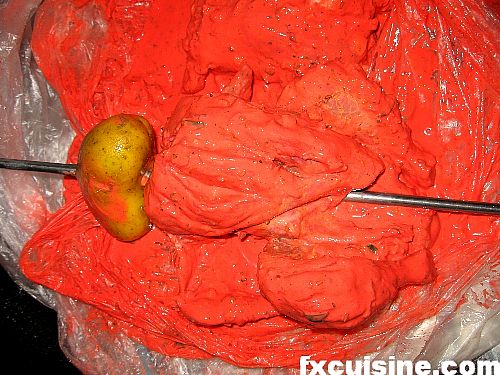Data collected by the Centers for Disease Control and Prevention (CDC) show that improper cooling practices contributed to more than 500 foodborne illness outbreaks associated with restaurants or delis in the United States between 1998 and 2008.
 CDC’s Environmental Health Specialists Network (EHS-Net) personnel collected data in approximately 50 randomly selected restaurants in nine EHS-Net sites in 2009 to 2010 and measured the temperatures of cooling food at the beginning and the end of the observation period. Those beginning and ending points were used to estimate cooling rates. The most common cooling method was refrigeration, used in 48% of cooling steps. Other cooling methods included ice baths (19%), room-temperature cooling (17%), ice-wand cooling (7%), and adding ice or frozen food to the cooling food as an ingredient (2%).
CDC’s Environmental Health Specialists Network (EHS-Net) personnel collected data in approximately 50 randomly selected restaurants in nine EHS-Net sites in 2009 to 2010 and measured the temperatures of cooling food at the beginning and the end of the observation period. Those beginning and ending points were used to estimate cooling rates. The most common cooling method was refrigeration, used in 48% of cooling steps. Other cooling methods included ice baths (19%), room-temperature cooling (17%), ice-wand cooling (7%), and adding ice or frozen food to the cooling food as an ingredient (2%).
Sixty-five percent of cooling observations had an estimated cooling rate that was compliant with the 2009 Food and Drug Administration Food Code guideline (cooling to 41°F [5°C] in 6 h). Large cuts of meat and stews had the slowest overall estimated cooling rate, approximately equal to that specified in the Food Code guideline. Pasta and noodles were the fastest cooling foods, with a cooling time of just over 2 h. Foods not being actively monitored by food workers were more than twice as likely to cool more slowly than recommended in the Food Code guideline. Food stored at a depth greater than 7.6 cm (3 in.) was twice as likely to cool more slowly than specified in the Food Code guideline. Unventilated cooling foods were almost twice as likely to cool more slowly than specified in the Food Code guideline.
Our data suggest that several best cooling practices can contribute to a proper cooling process. Inspectors unable to assess the full cooling process should consider assessing specific cooling practices as an alternative. Future research could validate our estimation method and study the effect of specific practices on the full cooling process.
Quantitative data analysis to determine best food cooling practices in U.S. restaurants
Journal of Food Protection®, Number 4, April 2015, pp. 636-858, pp. 778-783(6)
Schaffner, Donald W.; Brown, Laura Green; Ripley, Danny; Reimann, Dave; Koktavy, Nicole; Blade, Henry; Nicholas, David
http://www.ingentaconnect.com/content/iafp/jfp/2015/00000078/00000004/art00020

 sample and stool samples that were submitted for testing.
sample and stool samples that were submitted for testing. .jpg)
 In one of the lamest food safety excuses ever tabled, defence lawyer Adrian Gundelach t
In one of the lamest food safety excuses ever tabled, defence lawyer Adrian Gundelach t